Wishing You a Happy, Healthy & Sweet New Year!
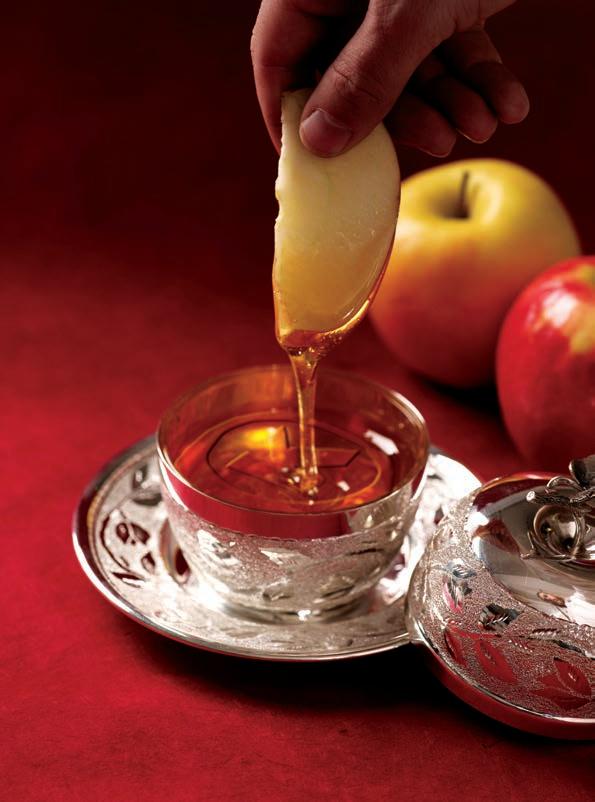
TISHREI 5772 ב"עשת ירשת ה"ב הקותמו הבוט הנשל
By Chanie Brod
By Rabbi Yitzchak Gornish
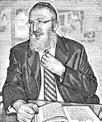
Dear Reader,
Our Sages tell us that gold and silver were only created to beautify the Tabernacle and the Holy Temple. Likewise, Chassidus teaches that everything in this world should be used to promote holiness. The Zohar, in Parshas Noach, explains that right before Moshiach comes there will be an abundance of new technology in the world.
Today we live in a world where we see these prophesies coming true as amazing technologies become part of our everyday life.
By Rabbi Yitzchak Hanoka
By Rabbi Don Yoel Levy
CHASSIDIC INSIGHTS: THE PURPOSE OF CREATION
Compiled by Dina Fraenkel
Most adults today were born into an era that did not know of cellular/mobile phones, smartphones, tablets, or even laptop computers! In the short span of one generation, look how much the world has changed! In 2009, smartphone sales reached 172.4 million units and Apple recently announced more than 200 million iOS devices in use with over 15 billion app downloads. Google reports 135 million Android phones currently in use and there will be an astonishing 1 billion smartphone users by 2013. I think it’s clear that Moshiach is just around the bend.
It is mindboggling to think that a little hand-held device that can easily be slipped into a shirt pocket has the ability to connect and talk to people across the globe, access information about almost everything in seconds, and even connect by video conferencing. With ease of use combined with the many Torah applications (apps)—from Hebrew calendars to Kabbalah and Chassidus—one can surely say that these smartphones are spreading G-dliness to all corners of the world.
The has always been on the cutting edge, fusing Halacha and old world traditions with the latest available technology. From custom-made computer programs in the late 1980s to the most comprehensive kosher programs available today, the rabbis at the are able to have greater control and understanding of our kosher certified products, offering clearer transparency to all kosher consumers.
During the past year, the has taken technology to a whole new level, from short online in-depth kashrus videos explaining kosher concepts on Torahcafé.com
We welcome your comments, submissions and letters to the editor.
Mail: 391 Troy Avenue, Brooklyn, NY 11213
Email: editor@kosherspirit.com
© 2011. No portion of this publication may be reprinted without written consent from the publisher
(www.torahcafe.com/tag.php?t=kosher-corner), to using social networks and instant notifications for the things you want and need to know about the latest kosher news and developments. The has developed smartphone apps for iPhones, iPads and Androids, apps that thousands of people use daily, at home and on the go, to teach one how to rid
EDITOR:
Dina
DESIGN & PHOTOGRAPHY: Spotlight Design 3 4
6
13 14 16 18
SHARE YOUR SPIRIT IN THE NEWS HEALTHY SPIRIT Hashem’s Pharmacy
KOSHER IN... JAPAN
KOSHER SPIRIT Tishrei 5772 EDITOR-IN-CHIEF: Rabbi Chaim Fogelman
DoviScheiner ASSOCIATE EDITOR:
Fraenkel
5
9
20 22 23
KEEPING
LAWS OF SHOFAR
THE
RECIPE Mini-Apple Pies A PIONEER IN SCIENCE AND KASHRUS
TISHREI
REVISITED
CHINA
BEHIND THE Interview with
Yitzchak
IN ACTION
WHO’S
Rabbi
Ort
SOUL NUTRITION
vegetables of the most common infestations, or instantly tell if a product is Cholov Yisroel or Pas Yisroel right there in the supermarket.
Join us on Twitter and Facebook and check out our Vegetable Checking Guide and Kosher Food Guide in the App Store and Android Market and see how the is making the world kosher in more ways than one.
With best wishes for a good and healthy new year, with good use of the latest technologies.
Rabbi Chaim Fogelman Editor-in-Chief
FEEDBACK

Share Your Spirit

Readers share their thoughts...
Dear Kosher Spirit,
Imust say, your kosher apps are awesome. They are colorful, easy to use, and in demand. When I used to have an iPod, I used the Veggie Guide. Now, however, I have a Blackberry and was wondering if such fine apps will ever be available on BB? Please make them available for Blackberry as a lot of frum Jews have them and there is demand.
Thanks so much,
O. Avraham
Ed. Note: Thank you for your suggestion! At the we are always looking to new technology to keep the kosher consumer informed. We will look into developing apps for the Blackberry, in addition to the apps available for iPhone and Android.
Dear Kosher Spirit,
Asa yungerman, Rabbi Berel Levy ob”m would give me hashgacha jobs during the Pesach break to help me support my family while learning in kollel
Once I was working for large, well known candy company — for Pesach, Rabbi Levy made them kasher all keilim (it took a week), even though most of the keilim held only pure chocolate which is not chometz
After production started, I walked around looking at the ingredients. Very boring, nothing amiss. Then one day I saw them using a nougat crème with no hechsher The ingredients seemed kosher, except for corn starch which is kitniyos. I did not know how important this was, so I called up.
Rabbi Levy came right away to investigate and made them kasher the keilim over again. All for a small amount of kitniyos. Also, the product already made was relabeled as chometz! All because of a mi’utd’miuta (a tiny minute bit) of cornstarch! How did he get this company to agree? Amazing.
Finally, he went around questioning all the workers to make sure there were no more mistakes. I never saw such scrupulousness before or since, and all these years later the just keeps on getting stronger and better.
Keep it up!
Yehudah B.
www.KosherSpirit.com • 3
Newly Certified by the Carry-On Sukkah Light, easy, portable and sets up in minutes! www.sukkahdepot.com
The Wall Street Journal Features Kosher

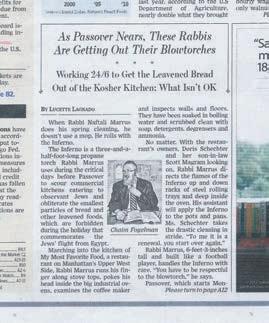

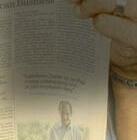




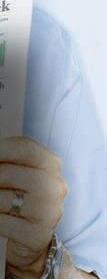

The was recently featured on the cover of the Wall Street Journal. The national newspaper, read by over 15 million people daily, highlighted the arduous process by which certified companies ready their kitchens and factories for Passover production.
Rabbi Chaim Fogelman, Editor in Chief of Kosher Spirit, and Marketing and Education Director for Kosher, was interviewed on behalf of the . The beautiful article focused on the basics of kosher laws, the history of Kosher Certification, the companies that the certifies, and the kosher market as a whole. The article emphasized the ’s requirement to have a mashgiach temidi in all restaurants and catering services to ensure constant compliance with kosher laws and avoid issues of Bishul Akum (food cooked by a non-Jew). The article even touched on interesting products that the has been asked to supervise, including paper bags and dog treats!
We are told that Rabbi Fogelman is only the second Orthodox Jew to ever grace the cover and he was even depicted in the Wall Street Journal’s famous “dot-portrait” format!




4 • www.OK.org
IN THE NEWS
Read the whole article at: quickosher.com/2011/05/02/wsj
Hashem’s Pharmacy from the Talmud and Midrash:
A sliced carrot looks like the human eye. The pupil, iris and radiating lines look just like the human eye... And YES, science now shows carrots greatly enhance blood flow to and function of the eyes.
A tomato has four chambers and is red. The heart has four chambers and is red. Research shows that tomatoes are loaded with lycopine and are indeed pure heart and blood food.
Grapes hang in a cluster that has the shape of the heart. Each grape looks like a blood cell and all of the research today shows grapes are also profound heart and blood vitalizing food.

Kidney beans heal and help maintain kidney function and yes, they look exactly like the human kidneys.
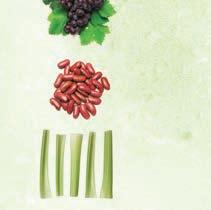
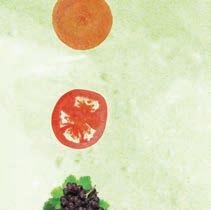
Celery, bok choy, rhubarb look just like bones. These foods specifically target bone strength. Bones are 23% sodium and these foods are 23% sodium. If you don’t have enough sodium in your diet, the body pulls it from the bones, thus making them weak. These foods replenish the skeletal needs of the body.
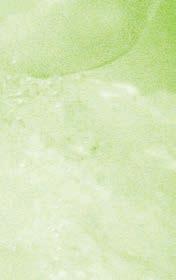
Sweet potatoes look like the pancreas and actually balance the glycemic index in diabetics.
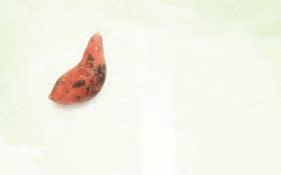
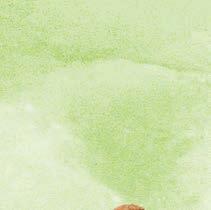
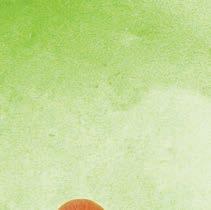


A walnut looks like a little brain, a left and right hemisphere, upper cerebrums and lower cerebellums. Even the wrinkles or folds on the nut are just like the neocortex. We now know walnuts help develop more than three dozen neuro-transmitters for brain function.


Avocados, eggplants and pears target the health and function of the womb and they look just like this organ. Today’s research shows that when a woman eats one avocado a week, it balances hormones, sheds unwanted birth weight, and prevents cervical cancers. And how profound is this? It takes exactly nine months to grow an avocado from blossom to ripened fruit. There are over 14,000 photolytic chemical constituents of nutrition in each one of these foods (modern science has only studied and named about 141 of them).
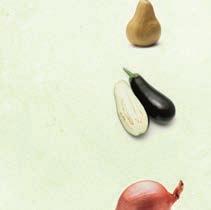
Onions look like the body's cells. Today's research shows onions help clear waste materials from all of the body cells. They even produce tears which wash the epithelial layers of the eyes. Garlic, a working companion, also helps eliminate waste materials and dangerous free radicals from the body.
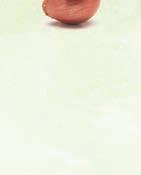
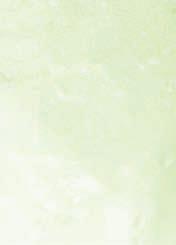
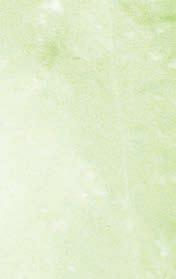

www.KosherSpirit.com • 5
KEEPING KOSHER IN...
By Chanie Brod
apan. The birthplace of the Mazda parked outside, the Toshiba laptop on which I work, play, and shop. It’s no secret that Japan is a leader in the electrical and automotive industries, and chances are a fair amount of appliances in the average American home originate from Japan. But patriotism sh ines in our kitchen, where most foods are manufactured in the US. Several sheets of seaweed, some rice, and wasabi powder — souvenirs of my short stint as sushi master — are the only foods with a Japanese label. Yet despite the army of American foods stationed in my cabinet, a simple inquiry would reveal many of their ingredients, too, can be traced back to Japan.
In addition to electronics, Japan is one of the primary producers of some of the major food additives, health supplements, and basic raw materials necessary in kosher food production.
If the contents of my kitchen cab-
inet originated in Japan, where could it be easier to find fresh, kosher Japanese cuisine than Japan itself? Well, New York for a start. Or London. Or Yerushalayim. But although raw materials and additives are readily available, a diet of chemical addi-


tives is not quite sustainable. Shopping for ready-made kosher cuisine in Tokyo is like shopping for a jelly doughnut on Passover, Rabbi Hertsel Simantov soon found out. An Oriental Medicine practitioner, Rabbi Simantov moved to Japan in 1989 to research Oriental medicine. Two years later, Rabbi Simantov started working for Kosher Certification as a mashgiach temidi
Japanese society values natural and holistic approaches to healing, and it was his interest in Hari acupuncture that brought Rabbi Simantov to Japan. Natural and organic foods including sembe, miso, sushi, soy and green teas are all staples of the Japanese diet. Soy sauce has become an indispensible ingredient in hundreds of Shabbos recipes. It may be hard to imagine, but Asian gourmet products were not always available for the kosher consumer. In
6 • www.OK.org
1970, shortly after Neil Armstrong took his first step on the moon, Kosher Certification took one giant step for the kosher industry by becoming the first kosher agency to certify a food manufacturer in the Far East. Mitoku, manufacturers of macrobiotics and organics, was certified by ’s strict standards and made available to the kosher consumer. Mitoku is now one of close to 100 Japanese companies currently certified by the
More than for their sushi, Japan’s claim to fame is its status as leader in the science industries. Many foreigners frequent Japan for business, among them a significant number of Jews. From Israel, Europe and the USA, they settle in Japan for several months or years, both alone or occasionally with family. Having lived in Japan for over two decades, Rabbi Simantov is something of an anomaly. He fondly remembers his first few years there.
Ironically, despite being heavily involved in the kosher industry, finding kosher food was a struggle for Rabbi Simantov. “My Japanese friends were amused by my rabbit food,” he says of his diet. “I ate fruits and vegetables, lots of them. Meat and poultry were imported every couple of months, and our baking skills received constant practice. Bread, challah, and cookies were all homemade. We could snack on an unlimited supply of sembe crackers, but we’d have to be in Israel or New York to be able to go out and enjoy a kosher restaurant dinner.”
“In the beginning, it was very hard,” he admits. “There was no community. I would travel back and forth between Japan and New York.” It was on one such flight that he met a Chabad rabbi. Although a private audience with the Lubavitcher Rebbe was rarely granted, an audience was
arranged for Rabbi Simantov and his wife. “At the yechidus, the Rebbe told us that a person has to improve his surroundings, and that we should keep our eyes and minds open to
In addition to his roles in the medical field and kosher industry, Rabbi Simantov soon found himself speaking, teaching, and leading services for the many Jewish expats from around
In 1970, shortly after Neil Armstrong took his first step on the moon, Kosher Certification took one giant step for the kosher industry...

helping the community,” he relates, “but I was not an outgoing guy. I was not that guy who stands up and speaks in front of a group of people.”
With no Orthodox synagogue in the area and the High Holidays fast approaching, the Jewish expats turned to Rabbi Simantov to organize services. “Our first RoshHashanah services were held in the living room of our apartment” he says pointing to the cozy space behind him. From the webcam screen I am using it looks rather small for a synagogue. “It’s two by three meters,” he confirms, “but throughout the day 120 people came here to pray. When we blew the shofar all the neighbors’ windows opened; I guess they thought we foreigners had an unusual taste in music!”
the world. For the holidays, he arranged for several Lubavitch young men to help serve the religious needs of the community. The young men would leave their parents’ seder tables and their familiar shuls. In exchange they would prepare and lead holiday sedarim and services, injecting their contagious enthusiasm and excitement in the Japanese Jewish community. Mendi Sudakevitch was one such young man whose frequent trips to Tokyo resulted in a significantly longer stay. Shortly after marrying his wife Chana, the couple returned there permanently for a life on shlichus
“We recently purchased a building for use as a Jewish center, and are in the final phase of renovations for the shul. In fact, the upshernish (first hair-

www.KosherSpirit.com • 7
cutting ceremony) of the shliach’s son was just held there today!” Rabbi Simantov says proudly. “The building of the mikvah was due to begin now, but the earthquake has upset the plans...” his voice trails.
The images of destruction and devastation left by the infamous earthquake on March 11, 2011, shocked the world. Rabbi Simantov remembers the day vividly. “It was around 3:00pm and I was at a kashrus meeting. We were on the eleventh floor. Suddenly the building started shaking. The higher you are the more you feel it, and feel it we did. It was swaying side to side; up and down... we were being shaken like lulavim on Sukkos.It just kept going without stopping. After three minutes the end still didn’t seem in sight. I started praying...”
After what seemed like an eternity, all was still. The power was out; elevators, trains and electricity were out of service, and there were no taxis on the roads. With only two and a half hours left until Shabbos, he had to move quickly. Japanese etiquette requires one to remove their
shoes before entering a room. Rabbi Simantov was close to the ground floor when he realized that his shoes were still on the eleventh floor and he would have to climb back up the dark building to get them. After a long trek through the panicked streets of Tokyo, Rabbi Simantov eventually made it to the Chabad House for Shabbos. The mood there was somber as the extent of the damage was becoming apparent.
With 15,000 dead and 400,000 without shelter, the Jewish community’s energy and resources were quickly diverted from building the shul and mikvah to aiding the victims of the disaster. After sending his family to Israel for their safety, Rabbi Sudakevich stayed in Japan to help with disaster relief. Together with Rabbi Avtzon, the head Chabad Shliach to the Far East, and many other volunteers, they embarked on a humanitarian mission to provide aid for the thousands of hungry and homeless. In Sendai, a coastal city hard struck by the tsunami, Japan Jewish Relief supported two shelters and organized a free bakery where thou-
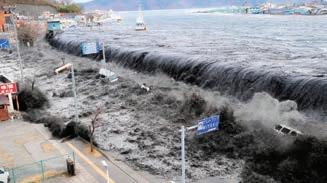
sands of meals were served daily.

Villages and towns that were bustling with life only short months ago are now abandoned ghost towns. A country in crisis coupled with a food shortage often invites lawlessness, rioting, and looting, yet the Japanese maintained their trademark dignity.
The country is slowly recovering from nature’s deadly blow. In the metropolis, the Japanese return to business as usual, yet scars are still visible. Life is different. When planning his schedule to inspect different kosher plants, everything now takes longer. As part of an emergency effort to conserve energy, escalators are switched off and the trains run much less frequently. Businessmen meet in dimmed offices without shoes and ties. Suits are in lighter color and fabric in attempt to be comfortable while keeping the air conditioner temperature no lower than 80 degrees. But nobody complains of their discomfort, they feel lucky to be alive. At a recent meeting a manager told Rabbi Simantov of one of their facilities that was annihilated, swept away by a 30-foot wall of water and taking the lives of several employees.
But life goes on. People continue to eat, companies continue to produce food, and Rabbi Simantov and the continue to ensure that the highest kosher standards are maintained by almost 100 certified Japanese companies. With all resources being channeled to the relief effort, the renovations of the Jewish community suffered a setback and the building of the mikvah is on hold until the much needed funds can be secured. But for the Jewish community of Japan, the future is bright. In the visible horizon, past the debris and alongside the Mazda and Mitoku plants, the silhouette of a shul, mikvah, and kosher restaurant can be seen.
8 • www.OK.org
With 15,000 dead and 400,000 without shelter, the Jewish community’s energy and resources were quickly diverted to aiding the victims...
The Laws of
Shofar
By Rabbi Yitzchak Gornish
Rosh Hashanah , the Head of the Year, and the start of the Aseres Yemei Teshuvah (Ten Days of Repentance), is associated with only one Biblical commandment – the blowing of the shofar . The mitzvah of shofar is so deeply connected to the essence of Rosh Hashanah that the Torah refers to Rosh Hashanah as “ Yom Teruah ” (Day of the Blowing).1 The mitzvah of shofar is steeped in symbolism – for centuries, the Jew ish people risked their lives to hear the call of the shofar . In the Mishna , there is a discussion about blowing the shofar in confined areas and questions arose as to the validity of the performance since one is also distracted by the echo.2
The commentaries explain that this question came up during times of persecution when blowing the shofar was prohibited and Jews were forced to fulfill this commandment in secret. Even during the British occupation of the Holy Land it was forbidden to
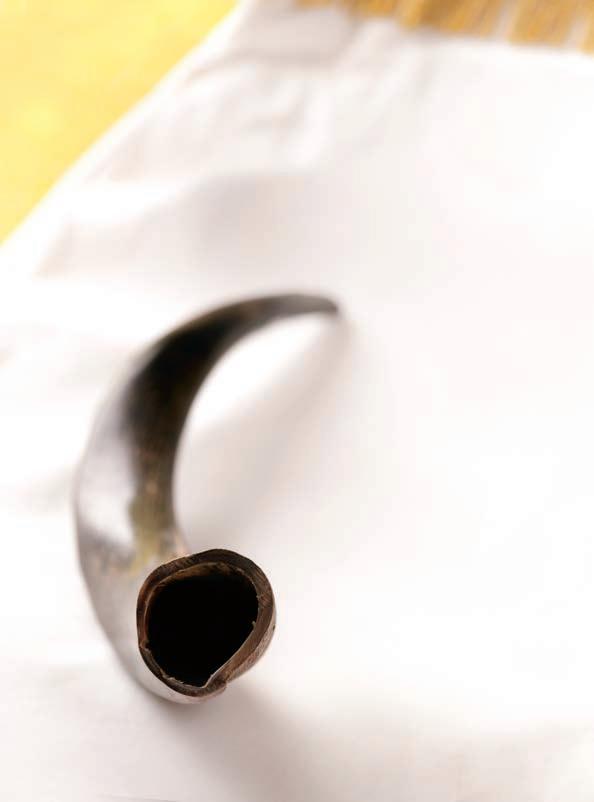
www.KosherSpirit.com • 9
blow the shofar at the Western Wall and many Jews risked imprisonment to blow the shofar at the only remaining remnant of our Holy Temple.
There are numerous explanations for the mitzvah of blowing shofar. Since Rosh Hashanah is the day we proclaim Hashem’s Kingdom, it is fitting to blow wind instruments as was the custom at a coronation. In addition, as Rosh Hashanah is the start of the Ten Days of Repentance, we are alerted to take advantage of the King’s kindness and do teshuva during this period.3 This warning is accomplished by a loud blast of the shofar
Another reason is to remind us of MatanTorah, which was preceded by blowing the shofar. A fourth reason is because the words of our prophets are compared to the shofar call.4 The shofar reminds us of the destruction of Jerusalem which was subject to the victorious trumpet blasts of our enemies. The shofar is also a reminder of the great Yiras Shomayim of our forefather Avraham when he was prepared to sacrifice his only son Yitzchok (a ram was substituted instead).5 The shofar also reminds us of the greatest Day of Judgment at the end of days, the ingathering of the Jewish people to our homeland and the raising of the departed when Moshiach comes. 6 Furthermore, the shofar serves to confuse the Satan so he cannot effectively serve as a prosecutor during our judgment, so we may merit a merciful ruling.7
Most importantly, the Medrash tells us that when Hashem hears the call of the shofar He rises from the Throne of Justice and sits on the Throne of Mercy to review the personal accounts of each person on Rosh Hashanah 8
Although Rosh Hashanah is referred to as a “Day of Blowing”, the actual mitzvah is to listen to the shofar sounds.9 In fact, the blessing on the shofar states, “…to listen to the call of the shofar”. As mentioned, blowing in an area that is “echo prone” may invalidate the performance of the mitzvah even though one blew the shofar properly. This is proof that the essence of the mitzvah is actually hearing every blast of the shofar, not the act of blowing.
Making a Shofar
The process of producing a kosher shofar has not changed much throughout the ages. Though the majority of shofros originate as rams’ horns, the Yemenite community traditionally utilizes the horn of an African antelope called the “kudu”. A ram shofar has the additional benefit of reminding Hashem about the binding of our forefather Yitzchok. However, many horns are kosher for use as a shofar, unless they originate from cattle or a non-kosher
species.10 Cattle horns remind Hashem of the sin of the Golden Calf and the Gemara refers to them only as “keren”, as opposed to other horns which are called “shofar” as well.

An animal’s horn is constructed of soft bone tissues covered by an outer layer of keratin (the same material as fingernails). In order for a shofar to be kosher for the mitzvah, the inner tissue layer must be removed. This is accomplished by drying the horn for about a year. At this
point, the inner layer is shriveled up and is easily removed. If one were to remove the core from the sheath and drill a hole through it, it would not be a kosher shofar 11 The shofar is placed in boiling water to sterilize any lingering bacteria and to facilitate the gentle scraping of any internal material clinging to the inside. The shofar is then left to dry. When it is dry, the tip of the keratin is carefully sawed off and a hole is drilled into the center of the shofar to form a

10 • www.OK.org
Top: An African Kudu. Bottom: Traditional shofar source, Rams.
mouthpiece. While flaring the mouthpiece allows for easier blowing, one should inspect the shofar to insure that the mouthpiece has not been distorted; as such a shofar is not preferred.12
Any pitch produced by a shofar, whether loud, soft, or dry, is acceptable.13 If a shofar has a hole, some sources consider it kosher even if it affects the sound; however, the prevailing view is not to utilize such a shofar 14 If one sealed the hole with a foreign material, even if the sound improves to what it was originally, the shofar is not kosher.15 If shofar material (like dust or shavings) was utilized to plug the hole, the repair is valid as long as most of the shofar remained whole and the sound reverts to the original.16 However, in extreme circumstances, even if the sound has been affected due to the patch, the shofar may be used.
If a shofar splits along the
entire length, it is no longer kosher. 17 If partially split, then if it is tied tightly it may be used.18 If mostly split, some authorities allow for gluing. If split entirely across the width then if four thumb breadths (about 3.16 – 3.76 inches) remain (the minimum required length of a shofar) it is acceptable.19 However, if one assembled sections of shofar and bonded them it is invalid even if each section is four thumb breadths,20 since this is as though one connected several shofars together and the Biblical limit is one shofar 21
If one blows with the shofar facing downwards it is unacceptable,22 since the shofar must be blown in the posi-
tion that it faces in nature, upwards. One must blow from the narrow end, the side facing the Heavens in nature.23 If one widens the narrow end and narrows the wide end it will not be a kosher shofar.
As mentioned, a shofar has a soft tissue core and a keratin sheath. Cattle horns are one solid piece of bone, which is one reason why they are not used for shofros
A shofar need not be from an animal that was slaughtered properly (by shechita), but may not originate from a non-kosher species.24 If one simply drills through the core and does not remove it, the shofar is valid.25 There is no minimum thickness for the shofar walls.26 One should not draw on or dye a shofar; however one may etch carvings into the outside of a shofar 27

One is permitted to blow the shofar on Rosh Hashanah, but one may not desecrate YomTov in any way, even on the second day of YomTov, except to instruct a non-Jew to obtain one from outside the permitted carrying zone.28 If a non-Jew constructs a shofar on RoshHashanah, without being asked to do so, the shofar is kosher.29 One may pass liquids through a shofar on RoshHashanah to enhance the sound.30 The shofar is not blown on Shabbos as is derived from a verse in the Torah and may not even be handled as it is an object utilized for sound and, therefore, muktzah. 31 However in the BaisHaMikdash it was blown on Shabbos and according to some authorities also a Bais Din can blow shofar on Shabbos (not relevant in our day).32 On YomTov, it may not be utilized for other tasks that do not involve blowing.33
While a bent shofar actually conveys contrition and should be sought out,34 in order to drill the hole for the mouthpiece a very bent shofar must first be carefully heated to 350 degrees to allow for a partial straightening. Otherwise, it would be impossible to drill as one would have to drill on a curve. The straightening and drilling process is the period when a shofar is most fragile and may crack or split,
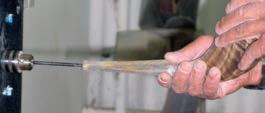
www.KosherSpirit.com • 11
...When Hashem hears the call of the shofar He rises from the Throne of Justice and sits on the Throne of Mercy to review the personal accounts of each person on Rosh Hashanah...
Above: Drilling the mouthpiece of a shofar.
wasting many hours of labor and expense. As many workers are paid by the piece, there is a strong temptation to patch such cracks with shofar shavings blended with invisible glue. A professional repair job can almost never be spotted except through x-ray.
Another concern regarding shofars is that polishing the shofar may create a weak spot which over time will cause the shofar to break. Unscrupulous manufacturers often coat the inside of the shofar with lacquer of urethane that can strengthen the shofar or hide defects. However, this may distort the sound of the shofar rendering it invalid. Not long ago, the press reported on “shofars” produced in molds containing plastic fibers and leather glue. These economically priced “shofars” were purchased by an unsuspecting public. To ensure one is obtaining a kosher shofar, only frequent a reputable certified shofar dealer, as differentiating a genuine shofar from a counterfeit one requires expertise.
An issue some have with a shofar is the strong odor emanating from it. While there are several dubious remedies for eliminating the odor, storing it dry (especially after use) and in a dry location may curtail some of the odor. Remember, the shofar was a part of a living being. Only synthetic shofars have no natural odor
Blowing the Shofar
Women are not required to listen to the shofar since it is a mitzvah that is dependent on the time of the year and, in fact, a woman cannot blow the shofar for the benefit of a man since he is commanded to fulfill this mitzvah while she is not. However, the custom is that women do listen to the shofar and in fact can blow the shofar for themselves and other women even with a brocha 35
On a Biblical level, one is only required to listen to nine calls of the shofar. 36 It is derived from verses that three teruos are required and each needs a tekia before and after, totaling nine.37 However, a question arose as to what constitutes a proper terua: is it three short sounds (shevarim), many rapid sounds (terua) or both together (shevarimterua)?38 The Talmud therefore requires one to listen to all of them for a total of 30.39 The commentaries struggle with how this doubt arose as Jewish people have been blowing shofar consistently since Sinai. One approach is that there were always different groups that blew according to their interpretation since these doubts are based on how one interprets specific verses. The Talmud, therefore, requires us to hear shofar according to all the different interpretations, presenting a common mitzvah of shofar on
Rosh Hashanah to demonstrate our unity.40 In fact, the Zohar41 mentions the mystical significance of blowing all three versions of terua, centuries before the Talmud.
The tekios are grouped into two categories – the seated tekios (before Mussaf) and the standing tekios (during Mussaf). Since the shofar has the power to confuse the Satan, it is blown before Mussaf so that he cannot interfere with our prayers.42
While the Talmud’s sum of thirty refers to the seated tekios, 43 there is a dispute as to how many times the shofar is blown during Mussaf 44 While there are those who also blow during the silent Amidah and those who only blow during the repetition by
the chazzan, our custom is to add many tekios after Mussaf to complete the 100.45 It is also our custom to blow the shevarimterua in one breath during the sitting tekios and two breaths during the standing tekios 46
One must be careful to separate the different shofar sounds or a question will arise as to their validity.47 One should also be careful not to talk until they have listened to all 100 of the shofar sounds.48
Through our meticulous fulfillment of this important mitzvah, may we merit to experience the call of the Great Shofar which heralds the imminent coming of Moshiach speedily in our days.
1. Bamidbar, 29:1.
2. Mishna, Rosh Hashanah, 27b, Rav Hai Gaon in Ran.
3. Rambam, Hilchos Teshuvah 3:4.
4. Sefer Kol Hakemach LeRabeinu BChai.
5. Gemara, Rosh Hashanah, 16:1.
6. Machzor Hameforash, R’ Saadya Gaon.
7. Gemara, Rosh Hashanah, 16:1.
8. Vayikra Raba, 29:10.
9. Rambam, Hilchos Shofar, 1:1.
10. Shulchan Oruch, Orach Chaim, 586:1.
11. Ibid., 586:15.
12. Minchas Yitzchok, 8:54.
13. Ibid., 586:6.
14. Ibid., 586:7, Rama.
15. Ibid., 586:7.
16. Ibid., 586:7.
17. Ibid., 586:8.
18. Ibid., 586:8.
19. Ibid., 586:9.
20. Ibid., 586:10.
21. Ibid., 586:58, Mishna Brurah
22. Ibid., 586:12.
23. Ibid.
24. Ibid., 586:8, Mishna Brurah
25. Ibid., 586:15.
26. Ibid., 586:14.
27. Ibid., 586:17.
28. Ibid., 586:21.
29. Ibid., 586:22.
30. Ibid., 586:23.
31. Talmud Yerushalmi, Masechta Rosh Hashanah, 4:1.
32. Gemara, Rosh Hashanah, 29b.
33. Ibid., 588:5, Rama.
34. Ibid., 586:1.
35. Ibid., 589:6, Rama.
36. Ibid., 590:1.
37. Ibid., 590:2, Mishna Brurah.
38. Ibid., 590:2.
39. Gemara, Rosh
Hashanah, 34a.
40. Gemara, Rosh on Rosh Hashanah, 4:10.
41. B’nei Yisaschar, Nissan, Maamar 4:2.
42. Shulchan Oruch, Orach Chaim, 583:3, Tur.
43. Gemara, Rosh Hashanah 34a.
44. Shulchan Oruch, Orach Chaim, 892:1, Mishna Brurah.
45. Ibid., 896, Rama & Mishna Brurah 2 in the name of Sheloh.
46. Ibid., 590:4, Rama; 590:9; 890:4, Sha’ar Tziyon 18 says the quoted Rama is a mistake and the correct way is one breath for sitting tekios and two breaths for standing tekios
47. Ibid., 590:5.
48. Ibid., 593:3, Rama. One does not need to hear the brocha again if he speaks during tekios
12 • www.OK.org
Mini Apple Pies

For the crust: 1 cup white all-purpose flour
6 Tbsp. Margarine

2 Tbsp. cold water
DOUGH: In a medium-sized bowl put 1 cup of flour. Cut in the margarine with a fork or pastry blender/cutter until the mixture has small lumps. Sprinkle the cold water over the flour and margarine and stir together until the dough pulls together and away from the sides of the bowl. If the mixture doesn’t seem to be doing this you can add another tablespoon of water. Roll the dough into a ball, wrap it in plastic wrap, then place it in the refrigerator for 20 or 30 minutes so it becomes firm. This will make it easier to work with.
FILLING: Mix together all of the filling ingredients except for the peeled and sliced apples. After they have been mixed add in the apples and stir until the dry ingredients have been well incorporated with your apples. Set aside. Preheat your oven to 345˚F.
PREPARATION: Take your dough out of the refrigerator and split into two. On a floured surface roll out the dough until it
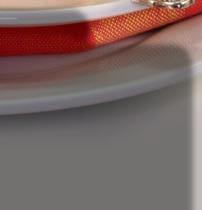
For the filling: 2 large baking apples, peeled and sliced into small pieces
1/3 cup sugar
is thin (about 1/8 inch).
1/8 cup white all-purpose flour
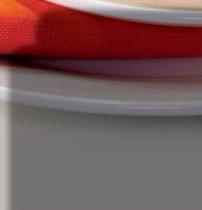

1/2 tsp. cinnamon
1/2 tsp. nutmeg
dash of salt
Use a small bowl as a guide and slice around the bowl. Then take the circle of dough and press it into greased muffin pan. Score the bottom of the dough with a fork a few times. Fill the dough with the apple mixture so that it comes over the top of the pan (when the apples are baking they will loose a lot of their water and sink down).
Cut the excess dough, leaving a centimeter of dough on the outside. Now cut a smaller circle of dough and put it on top of your pie. Pinch the top dough together with the bottom dough (the centimeter part). Score the top with a knife. Repeat with remaining dough.
BAKING: Place the muffin pan in the oven, and place a sheet of aluminum foil on the rack below to catch any liquid that may fall from the pan. Bake for about 35 minutes, and check to make sure the apple pies are done. Let cool for 20 minutes and remove from pan.
Tishrei Recipe
www.KosherSpirit.com • 13
This recipe makes approx. 6 mini pies the size of medium-sized muffins
Dr. Yaakov Hanoka, OB”M, A Pioneer in Science and Kashrus
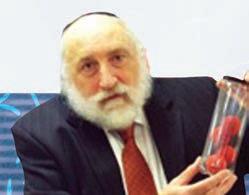 By Rabbi Yitzchak Hanoka Rabbinic Coordinator
By Rabbi Yitzchak Hanoka Rabbinic Coordinator


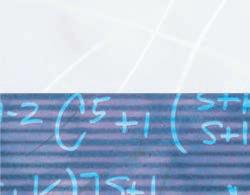
My father, Dr. Yaakov Hanoka, OB”M, passed away on 4 Iyar 5771 (May 8, 2011). He was constantly growing in all areas of his life and was never satisfied with mediocrity. In 1962, as a young man, he merited to be one of the first college-aged Baalei Teshuva in America. He was studying physics at Penn State University when he came in contact with the local Hillel Rabbi, a frum rabbi named Rabbi G. When the rabbi saw that my father was showing a serious interest in Yiddishkeit, he arranged for a group of Lubavitch young men to come to campus and host a Shabbaton
After the Shabbaton my father decided that he wanted to go to Crown Heights to meet the Lubavitcher Rebbe. He subsequently spent a year learning in Tomchei Temimim Lubavitch in 770, the central Lubavitcher yeshiva for young men. There was no program geared to Baalei Teshuvah at
the time and almost no seforim translated into English. The Rebbe told the yeshiva administration that there would be many more Baalei Teshuvah like my father and instructed my father to feel and act like a pioneer. When my father replied that he did not feel like a pioneer, the Rebbe replied that every Jew is a pioneer just by virtue of having received the Torah at HarSinai and having the responsibility to spread its Light. The Rebbe also told my father that the beginning will be challenging, but that he should not ask himself why he is here (in yeshiva) because for the first three (and then the Rebbe added the first six) months you will not be able to answer that question. The Rebbe also told my father that he could see my father was not the type to be afraid of challenges. When in college, my father also made the decision that he would not blame his parents for any of his difficulties and he pledged to view all of his future trials in life as challenges to overcome,
rather than problems to be endured.

After spending a year in yeshiva the Rebbe instructed my father to return to college and complete his degree. My father was encouraged to pursue his scientific career in solar energy so that he could spread Yiddishkeit in his field of expertise as well. His life’s mission was a balance of maintaining a deep commitment to Yiddishkeit and Chassidus and succesfully functioning in the secular world simultaneously (registering an astounding 57 patents!), thereby serving as a role model to others.
After becoming frum, my father kept CholovYisroel. The rabbi who was originally mekarev my father did not keep Cholov Yisroel because it was very difficult to obtain in central Pennsylvania. As a result, my father would not eat dairy in the rabbi’s home. The rabbi was hurt by this and my father had conveyed this to the Rebbe, so the Rebbe instructed his secretary, Rabbi Binyomin Klein (one of six young men who came to
14 • www.OK.org
Penn State for the Shabbaton and who knew Rabbi G. personally), to speak to Rabbi G. on behalf of the Rebbe. He told the Hillel rabbi that all of my father’s Yiddishkeit was in his z’chus (merit), so he should not feel slighted that my father could not

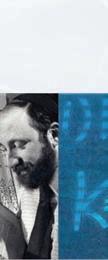
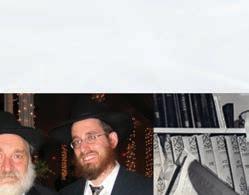
feel that my father could not eat dairy in his home A few years later, when my parents got married, they moved back to the rabbi’s neighborhood near Penn State while my father studied for his PhD My
mother A”H was a Hebrew Studies teacher and she taught the rabbi’s two sons. The rabbi was very indebted to my parents for living there and strengthening the community and specifically for educating his two sons while living there. After that the rabbi gained a new appreciation for my father’s commitment to Cholov Yisroel. This story illustrates the importance of being moser nefesh with regards to kashrus, and even Cholov Yisroel, no matter where you are living or traveling and to make sure to always treat others in a dignified mannerand find a way to bring Jews together in harmony.
Rav Sha’ar Yashuv Cohen, a renowned Rav in Haifa, Israel, once came to Penn State University while my father was studying for his doctorate. He met my parents and was so taken by the fact that my parents were keeping Cholov Yisroel in such a remote place like Penn State. Rav Cohen had a close relationship with the Lubavitcher Rebbe and when he
came for a yechidus (private audience) shortly after his visit to Penn State, Rav Cohen told the Rebbe about my parents and about how proud he was of their dedication to Yiddishkeit. A few months later, my father got kos shel brocha from the Rebbe and the Rebbe said, “I have warm regards for you from
brocha from Rebbe and Rebbe said, “I have warm for you from Rav Sha’ar Yashuv Cohen ”
In the winter of 1962, my father started the ganization that hosts
In the winter of 1962, my father Pegisha program, an organization that hosts Shabbatons to
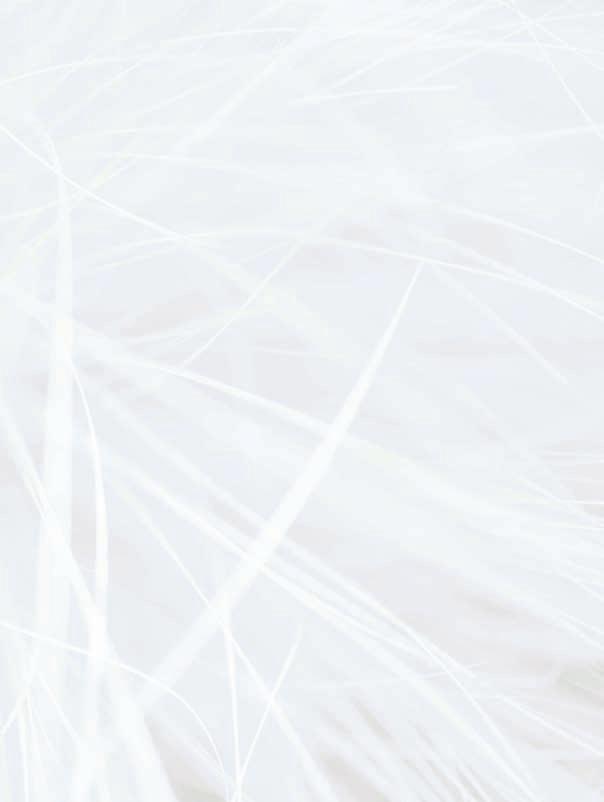
help mekarev Jews. Over the years, thousands of families have become frum through this program.

My father had many opportunities for Kiddush Hashem in his workplace. He once overheard a fellow employee criticizing another employee and calling him something lesser than a human being. My father interjected and stated that every person is created in the image of G-d. This made a lasting impression on this coworker who, five years later, expressed how moved he still was by my father’s statement.
My father gave tremendous encouragement to all those that knew him, especially when it came to em-
bracing challenges. It is no wonder that I ended up working in the field of kashrus after witnessing my father’s special devotion to the mitzvah of kashrus. He pushed me personally to dedicate myself to kashrus and to have a positive outlook and see every problem as a challenge to be conquered. My father also showed me, through his example, to constantly strive to do more and maintain a high standard in all areas of life. His
have a positive outlook and see every as a to be conquered father also showed me, his to constantly strive to more and maintain a standard in all areas of life His
messages are universal messages.
Every one of us has our G-d given mission in this world. Mine is kashrus and hafatzos hamayonos (spreading the wellsprings) of kashrus. As a young man, my father told me that he wanted to introduce me to the Lubavitcher Rebbe. He brought me to meet the Rebbe and the Rebbe blessed me, “May you follow in your father’s footsteps.” Due to the Rebbe’s encouragement, I feel a strong personal calling to apply my father’s unique qualities to the field of kashrus. My father’s life has taught me to constantly strive for excellence, overcome challenges and use every opportunity to spread Yiddishkeit. My father and I each had a different missionin life, yet our goal is the same – to spread the light of Yiddishkeit wherever we are and be a light unto the Nations. The lessons he taught me continue to guide me and help me every step of the way as I continue playing my role in preparing a kosher world for Moshiach.

www.KosherSpirit.com • 15
In 1962, as a young man, he merited to be one of the first college-aged Baalei Teshuva in America...
REVIS I T ED
By Rabbi Don Yoel Levy
My visit to China in the 1980s was not the first one made for kashrus purposes. My father, Rabbi Berel Levy, ob”m, was the first Kashrus Administrator to visit China in such a capacity. True to his pioneering spirit, my father made his first kashrus visit to China over twentyfive years ago. After developing kashrus inspection and certification in other Far East countries, such as Japan, Malaysia and Korea, he was called upon by Hunt Wesson (now known as ConAgra) to visit a facility in China. It is a shame he is not alive today to see the enormous growth the has achieved, despite those who have continually sought to undermine our dedication and success.

The purpose of his visit was to inspect two facilities, one producing water chestnuts and one producing bamboo shoots. These are products are indigenous to China and some of the only food products exported from China at the time.
Before his first visit to China, the Lubavitcher Rebbe , ob”m, gave my father special instructions to spread Yiddishkeit while he was on his kashrus mission. He had already established numerous mikvahs , added mechitzos to shuls , and enhanced many other mitzvos at the Rebbe ’s request.
Although the maintains a constant rabbinic presence in China, this summer I returned there personally after a six year hiatus. My first visit was over twenty-three years ago and China has changed greatly in the past two decades!
16 • www.OK.org
At that time, the Rebbe told my father that there were once Jewish communities in China and that the men even wore their hair in the ponytail style of Chinese men. The Rebbe instructed my father to find out where the Jewish people used to live, and suggested that he seek out a professor in the local university to help him investigate this (since a professor would always want to be able to answer a given question, and so would devote himself to finding the answer). What was the purpose of this request? The Rebbe said there were Jewish cemeteries in China that the authorities were going to dig up so they could make use of the land. In order to stop such a terrible desecration, these cemeteries needed to be identified and the local authorities needed to be influenced to prevent such destruction. On a recent visit to China, I was sadly informed that sometime after my father’s visit the Jewish cemeteries were dug up and the land used for development.
My father traveled to China many other times for kashrus inspections and, in fact, a visit to China was his last overseas trip before his untimely passing.

After my father’s passing, I dutifully took over his kashrus responsibilities and continued his holy mission. Of course, I continued to visit the Far East and China in my new capacity as Kashrus Administrator of the

At the time of my first visit, water chestnuts and bamboo shoots were still the primary food exports and conditions in China overall were quite primitive. Travel was often a challenge as airports were quite old fashioned and roads were not well constructed. In the 1980s, a distance of 120 miles by train or car took a minimum of six hours travel time. China was also a wasteland as far as Yiddishkeit was concerned. One had to travel to Hong Kong to spend Shabbos and a weekday minyan was unheard of. The only available kosher food was what you brought in your
suitcase, or cans of water chestnuts and bamboo shoots!
Conducting kosher inspections in China presents a unique challenge, aside from the language and other obvious barriers – most people in China have never heard of “kosher” and have no idea what it is about. Many people that I met in my travels had never even seen a Jewish person before! During one of my first visits to China, I traveled to a city called Qingdao, a famous coastal city. I was on my way inland to inspect a plant that produced kosher surimi (a fish based product) and we had to travel into the interior of China by car. After
Hebrew on the boxes. One day one of the workers showed him how he could duplicate the rabbi’s signature without difficulty!
In short - it was a real challenge. Over the past twenty years, I have continued to visit China. The China of today is a far cry of the China I experienced on my first few visits. Today, the airports are modern and a pleasure to pass through. Gone are the hours of bureaucratic red tape to enter the country. Today, the Chinese airport staff is extremely efficient. Formerly treacherous roads are now super highways. Older trains were replaced by speed trains travelling over
several hours of driving, we stopped to rest and as I got out of the car I was surrounded by an amused crowd of people who had never seen a frum Jew before! I am a relatively tall person (in comparison to the average Chinese man) and had a full, black beard which was unheard of in China.
So you can imagine the cultural challenge (or should I say culture shock!) that we faced with kosher production. Our requests were strange. We wanted a full time rabbi (as any reliable certification would) for fish productions. Sometimes, after traveling several grueling hours, we would arrive at a facility and request all of the production procedures. The companies would refuse, saying they do not reveal this information to anyone. We had to try to explain to them that we could not accomplish anything on our visit without the proper information. Once, we had a rabbi working full time in a fish facility for a few weeks. In order to seal the packages, he would sign his name in
300 kilometers per hour. But most importantly, Yiddishkeit is flourishing. Spiritual oases have sprung up in cities all over China with Chabad Houses and shluchim who live in China with mesirasnefesh, providing daily minyanim, shiurim, mikvahs, and kosher food.
On our recent trip, we visited Rabbi Shalom Greenberg, a Chabad shliach in Shanghai. From humble beginnings, he has returned Shanghai to a spiritual center, just as it was during World War II. During weekday minyanim the shul had the atmosphere of a heimishe shtiebel and Shabbos was an incredible experience, witnessing firsthand how he and his dedicated staff welcome Jews and bring them closer to Yiddishkeit. Of course, now that there are shluchim in China, they help us in our holy mission of spreading kashrus, as well as their duties to their Chabad Houses.
Stay tuned for the next installment to find out about the incredible network of rabbis working to supervise kosher production in China.
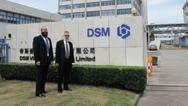
www.KosherSpirit.com • 17
WHO’S BEHIND THE
Interview with Rabbi Yitzchak Ort
D

Rabbi Yitzchak Ort

KS: Where did you grow up? Where did you go to yeshiva?
RYO: I was born in Williamsburg, Brooklyn and as a child I learned in the Tzelemer Cheder there. Later, my family moved to New Square and I learned in the Skver Yeshiva. As a bochur, I traveled to EretzYisroel to learn in the Stoliner Yeshiva and later came back to New York to BaisMedrashElyon in Monsey.
KS: What did you do after yeshiva?


RYO: In 1967, I married my wife Gittel and moved to Boro Park, where I worked as a rebbe in the Stoliner Yeshiva in the morning and learned in the afternoon. Later, I worked as an electrician for a few years.
KS: What is your current position at the ?

RYO: I am currently a Field Representative for the , visiting companies in the Midwest. I started working for the in 1977, under the leadership of Rabbi Berel Levy, ob”m. My specialty is the area of dairy kashrus, especially cheese production.



KS: What prepared you the most for your current position at the ?
RYO: Of course, my many years in yeshiva learning the halachos of kashrus was my main preparation for working in kashrus. My years of working as an electrician also help me immensely in my work, because I know the mechanics of the machinery used in food production. The dairy industry has changed tremendously
over the last 30 years that I have been involved in kashrus, so I have learned many things on the job as I go along. Finally, as my wife says, common sense is one of the most important faculties when working in kashrus!
KS: What is best thing about working at the ?
RYO: The best thing about working at the is the cooperation from the main office, good contacts throughout the kashrus world. The is overall a good company to work for.
KS: How would you describe the today?

RYO: As a field mashgiach I receive a lot of support from the office hierarchy to get things done – if I need assistance from a Rabbinic Coordinator or Rabbi Levy, I know I can rely on them. Most importantly, the does not compromise in order to earn an extra dollar. Of course, we help our companies and try to make the certification process as smooth as possible, but we don’t compromise our kashrus standards to avoid a financial loss like the loss of an account.
KS: Can you share an interesting experience that you had while working at the ?
RYO: Back when I first started working for the , Rabbi Berel Levy, ob”m, sent me to inspect a company in Chicago’s south side. I came in and performed my inspection, but I had the feeling that something was not right. I was very young and somewhat unsure, so Rabbi
MEET OUR STAFF: BEHIND
18 • www.OK.org
Levy told me to get all of the pertinent information and evaluate it. I told the owner that I would be back the following week for another visit.
When I returned, I had the same bad feeling. I told the owner I was back to get more information for my report and I needed to take another look around. Soon after, I left and told the owner I would let him know when I would come back again. I drove a mile or two down the street, turned around and came back to the plant through the back door. In those days, there was very little security and nobody questioned why I was back and entering through the back door.
While entering through the back, I found a false wall hiding a large storage area of treif ingredients! I told the owner that I would be reporting back to Rabbi Levy immediately and within ten minutes all of the reputable kashrus agencies would know about the fiasco. Nobody would give him a new certification.
This experience confirmed what I already knew. You need Siyata D’Shmaya (G-d’s help) to have success in kosher supervision. You have to ask Hashem to open your eyes, to help you find the answer when something feels or looks suspect.

What Other People Say About Rabbi Ort







“
Itis with special reverence that I write about Reb Yitzchok. As the senior rabbi at the , I must say that I have learned much from him. He is one of the experts (if not THE expert) in the kosher dairy industry. We have used his invaluable expertise countless times to help us provide the top-notch kashrus that the is famous for. Rabbi Ort also has vast knowledge of spray dryers and other areas, along with a special approach that makes him one of the most popular rabbis around. All of this and more has earned him the respect of the top kashrus organizations worldwide, another pioneering effort of my father, ob”m, who had the foresight to train him.
Rabbi Don Yoel Levy, Kashrus Administrator, Kosher Certification
Rabbi Ort is, by far, the most knowledgeable and experienced mashgiach in the entire dairy industry. He is held in the highest esteem by all rabbonim and hechsherim around the world.
Rabbi Hershel Krinsky, Rabbinic Coordinator, Europe
Ihaveknown Rabbi Ort for many years. His personality, character, middos and good sense of humor are second to none. In addition to his vast knowledge and experience in kashrus, there is no one who can match Rabbi Ort’s reliability. He is a pleasure to work with.
Rabbi Binyomin Gruber, CRC - Rav Hamachshir of Haolam Cheese
“He is one of the experts (if not THE expert) in the kosher dairy industry”
www.KosherSpirit.com • 19
– Rabbi Don Yoel Levy,
Tefillin Stolen

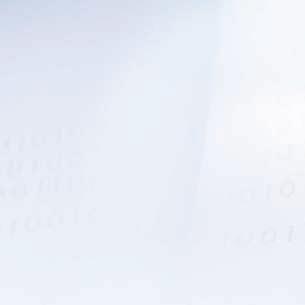
Then Recovered by Hashgocha Protis! Hashgoc





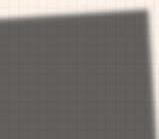








Rabbi Leizer Teitelbaum, Senior Rabbinic Coordinator, was travelling in Spain to visit facilities when his tefillin and laptop computer were stolen as he was checking in to the hotel. Rabbi Teitelbaum immediately contacted the local Chabad shliach, Rabbi Dovid Lieberson, to arrange to borrow a tallis and tefillin for the duration of his trip. A few weeks later, Rabbi Lieberson contacted Rabbi Teitelbaum to let him know that his tefillin were found. Here is the incredible story of their return!

20 • www.OK.org IN ACTION
Email Exchange:
Mashgiach Stays on Post Despite


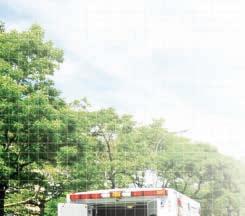


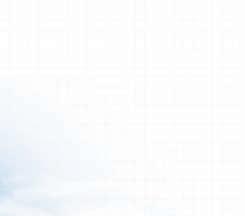
Medical Emergency!
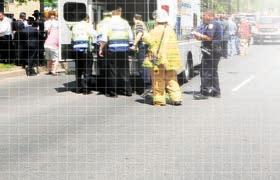
Alon Rozenshein, the mashgiach at Glatt Kosher Family restaurant, recently experienced a medical emergency while on duty, but put his responsibility to kosher consumers before his own health!
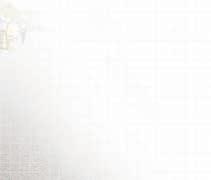

The Restaurant Coordinator relates the following story: “I got a phone call from the mashgiach at Glatt Kosher Family. He was breathing heavily and he said, “Rabbi, I don’t know what to do.” “What happened?” I asked. He said, “Hatzalah is here. Apparently I lost consciousness, the restaurant called
Hatzalah, and they want to take me to the hospital, but I cannot leave until we have a replacement mashgiach, what should I do?” At this point, I dispatched a new mashgiach and Alon waited 45 minutes until the new mashgiach came. Alon stayed overnight in the hospital for testing and to regain his strength. Thank G-d he is doing better and has returned to his position as mashgiach.
A consumer at the restaurant later contacted the to express his amazement at Alon’s dedication to kashrus. “I was in Glatt Kosher Family when the mashgiach lost consciousness and Hatzalah was called. Hatzalah treated the mashgiach and urged him to go to the hospital. I was amazed at his response; he told the members of Hatzalah that he cannot leave his post as a mashgiach unless there is a replacement for him. I have seen dedicated workers before, but this I have never seen. He was conscious, but he was weak, and he put his responsibility as a rabbi before his health. He is a person I look up to and emulate. I can only hope to be half the man he is today.”
Alon is a dedicated mashgiach and we would like to publicly thank him for his dedication, especially in a time of personal crisis!
www.KosherSpirit.com • 21
THE PURPOSE OF CREATION
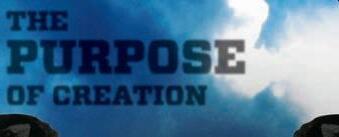
In the Mussaf service of Rosh Hashanah we say, “Today the world was born.” However, our Chachamim tell us that the world was actually created on the 25th of Elul1, so why do we say the world was born on Rosh Hashanah? Rosh Hashanah actually marks the sixth day of Creation – the day that Hashem created man. Why, then, do we commemorate the day man was created, rather than the day the world was created, the day Hashem showed His power to create something from nothing2? In addition, the 25th of Elul was called “one day” instead of “the first day”, signifying that Hashem was “alone in His world” and the world was completely one with Hashem, with no separation.3
Although the uniqueness and magnitude of the 25th of Elul is clearly significant, Rosh Hashanah stands out even more. The creation of man on Rosh Hashanah added a new dimension and connection between Hashem and His world. Man is the only being in both the physical and spiritual worlds that has the ability to choose to accept Hashem as King.4 All of the other creatures, from animals to angels, are linked to Hashem through the act of Creation, not through their free will.
When Hashem created man, He created the possibility of voluntary consent to live according to G-d’s Will, and a conscious decision to accept the unity of Hashem. In Chassidus, this concept is alluded to in the example of a tyrant and a sovereign. Both are absolute rulers, but the tyrant rules without his

subject’s consent, by force, while the sovereign is ruler by virtue of his subjects’ acceptance of his rule. They are free to leave his kingdom at any time. 5 Man, according to Chassidus, relates to Hashem as a sovereign, choosing Him each year anew as our King.
Hashem’s power, we become His partner in creation.8 This perception and power, unique to mankind, makes Rosh Hashanah, the day man was created, stand out above the 25th of Elul, because the potential of man to consciously become one with Hashem overshadowed all of the previous levels of creation.
Why do we need to consciously accept Hashem’s sovereignty? We know that Hashem is an inherent part of every aspect of creation and we are not really able to even fathom the extent of G-d’s unity with the world. So, why is our acceptance so important? G-d created the world in order to have a “dwelling place in this, the lowest, world.”6 It is not enough for Hashem to spread His energy into the lower worlds, but man, who has the dominion over the lower worlds, has to recognize Hashem in his midst and accept Him. This acceptance makes Hashem’s dwelling place complete.
Man is also created in order to spread the awareness of Hashem’s unity to all parts of the world. Adam haRishon exercised this power on his first day in the world by telling all of creation: “Come, let us bow down; let us bend the knee before G-d our Maker.”7 By teaching the world about
On Rosh Hashanah, we are correct in saying, “Today the world was born.”, even though the actual world was created on the 25th of Elul. We can understand this by looking at the Talmud and the laws of ritual purity. An incomplete object, or raw material, is not subject to the laws of purity until it is complete.9 Even though the 25th of Elul and the subsequent days revealed Hashem’s great power, these preceeding days were totally eclipsed by the creation of man and the great aspects of G-dliness that were revealed on Rosh Hashanah. By creating man, Hashem created a new definition of existence and the world before this creation did not previously exist. Thus, the anniversary of the creation of man can be considered the anniversary of all of creation.
CHASSIDIC INSIGHTS
1. Vayikra Rabbah 29:1; Pirkei deRabbi Eliezer 8:1.
2. Ramban on Bereishis 1:1.
3. Bereishis 1:5; Rashi on Bereishis 1:5; Bereishis Rabbah 83:8.
4. Mishneh Torah, Hilchos Teshuvah, ch. 5.
5. Likkutei Torah, Rosh Hashanah, p. 55b ff.
6. Midrash Tanchuma, Parshas Bechukosai, sec 3; Tanya ch. 33 & 36.
7. Zohar III, 107b; Tehillim 95:6.
8. Shabbos 10a; see Likkutei Sichos, Vol. XV, p. 95 ff.
9. Mishneh Torah, Hilchos Kelim 5:1.
Compiled by Dina Fraenkel
22 • www.OK.org
MAN IS THE ONLY BEING THAT HAS THE ABILITY TO CHOOSE
Forgiveness
There is a halacha that if someone confesses to a transgression on his own, he does not receive the punishment for his actions. He must just make restitutions for the damages caused. However, if someone confesses under pressure (for example he sees witnesses are going to testify against him,) there is a debate between Rav & Shmuel whether the confession is considered voluntary or not. Rav rules the confession voluntary and the person is not punished, but Shmuel rules that the confession was not voluntary and the person receives the full punishment for his actions.

On MotzeiShabbos, when we begin Selichos, we say, “B’motzei menucha (As the day of rest [Shabbos] departs) kidamnuchat’chila (we begin to approach you).” An alternate meaning of the verse is: “We approached you first.” We are coming forward on our own, so we should not receive the punishment for our transgressions.
But, is our confession really vol-

untary? Don’t we feel the pressure of RoshHashanah looming around the corner? Are we not a little too late in our confession? So we say, “V’salachtal’avoneinukiravhu. You forgive our many sins.” An alternative meaning of the verse is, “You forgive our sins because the halacha is like Rav, who says you are forgiveneven if you confess under pressure.”
So how are we forgiven according to Shmuel?
There is a different Halacha that a person cannot withhold testimony. The Gemara explains that this law only holds true if the witnesses are subpoenaed by the plaintiff. The pasuk says, “Im lo yagid v’nasa avono. If he doesn’t testify he carries his sin.” Normally, the word “lo” is spelled . Here it is spelled – implying both meanings (“to him” and “not), which isinterpreted as: “only if the plaintiff calls you”.
As Rosh Hashanah approaches, the Satan comes to tell Hashem that the Jews sinned and should





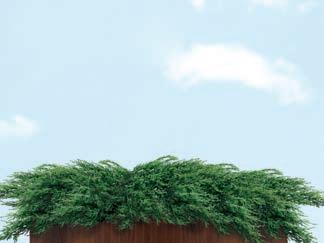
is good for body & soul

Evenings in the sukkah, and especially SimchasTorah, are often accompanied by the sweet sound of singing floating through the night air. We know that singing uplifts the soul, but now scientists are finding that singing has significant health benefits for the body! Researchers at the University of California at Irvine tested choral singers before and after performances and found that the act of singing raised levels of immunoglobulin A, an antibody that boosts immunity. Singing can also strengthen the lungs and circulatory system.
be punished. Hashem says, “Do you have any witnesses?” And the Satan replies that the sky and the earth are his witnesses, but the sky and the earth tellthe Satan thatunless Hashem calls upon them, they will not testify. In this way, even according toShmuel, we are forgiven for our sins.
The Mitteler Rebbe(the second Chabad Rebbe)says that this is theexplanation for the posuk, “Ani Hashem lo shonisi v’atamb’nei Yaakov lo chilisem. I, G-d, have not changed and the Jewish people will neverbeextinguished.” The Mitteler Rebbe says the posuk can alternativelymean, “Ani Hashem (I, Hashem) lo shonisi (have changed the spelling of “lo” to )” and, therefore, the Jewish people willneverbeextinguished.
As told by Rabbi Sholom Dovid Geisinsky in the name of his father HaRavMoshe Aharon Geisinsky OB”M
SOUL NUTRITION
www.KosherSpirit.com • 23 KOSHER BY THE
Android DownloadsApp 995 iOS App DownloadsStore
Hits at ’s Kosher
www.TorahCafe.com
SINGING
NUMBERS
7,118 44,686
Corner videos:
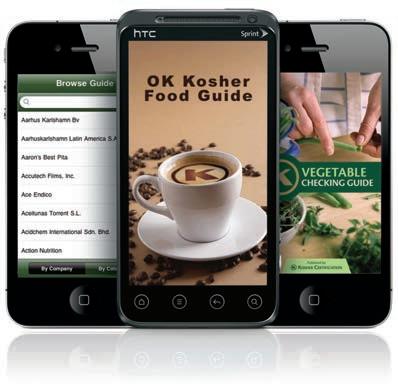

24 • www.OK.org The most powerful Kosher tools... now in the palm of your hand. NOW AVAILABLE FOR iOS AND ANDROID DEVICES! KOSHER CERTIFICATION Kosher Spirit, 391 Troy Avenue • Brooklyn, NY 11213 • 718-756-7500 • info@ok.org • www.ok.org 2 cutting-edge Kosher Apps now available as a free download on the App Store and the Android Marketplace The Kosher Food Guide provides the most up to date database of products certified kosher by Kosher Certification. Search by company or by category and have the latest info at your fingertips.











































 By Rabbi Yitzchak Hanoka Rabbinic Coordinator
By Rabbi Yitzchak Hanoka Rabbinic Coordinator




















































